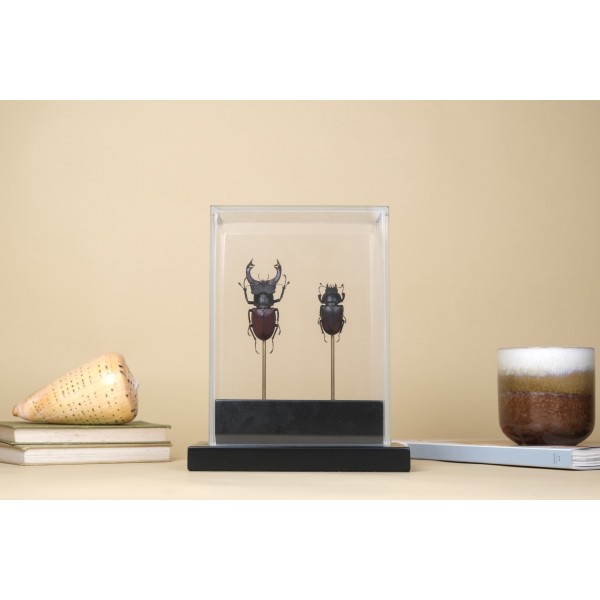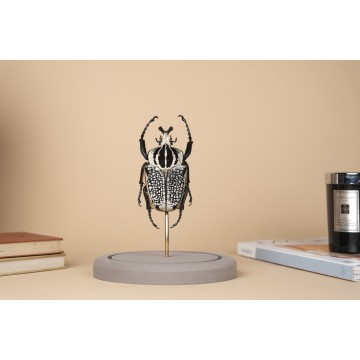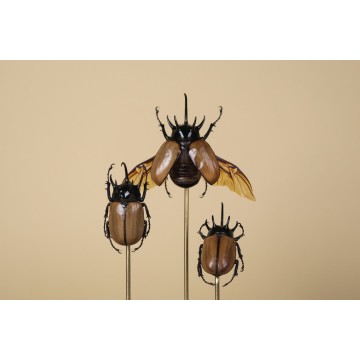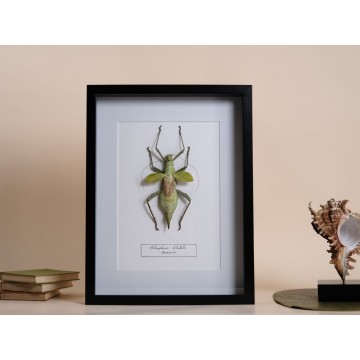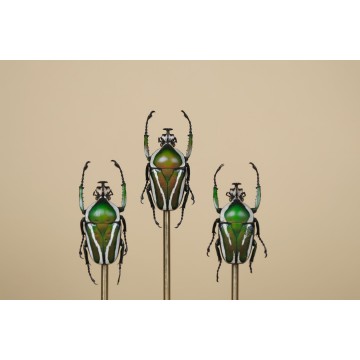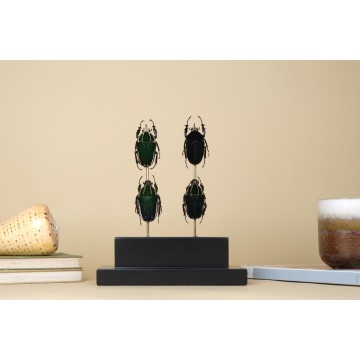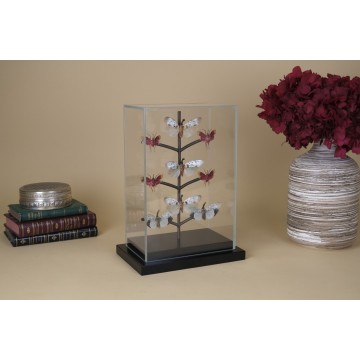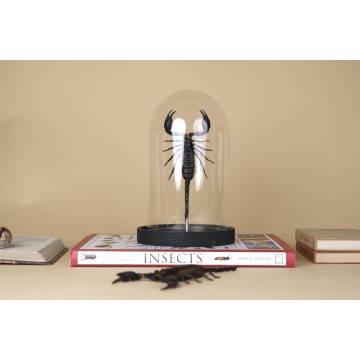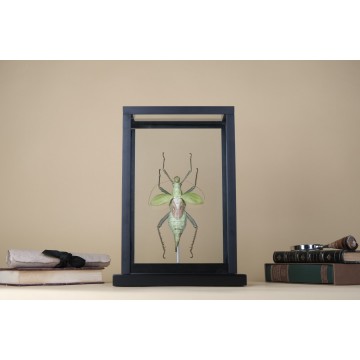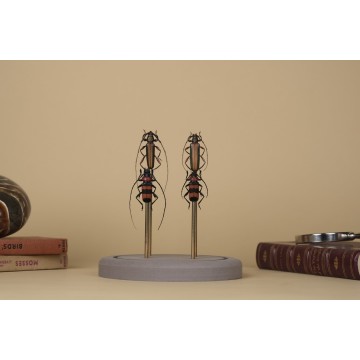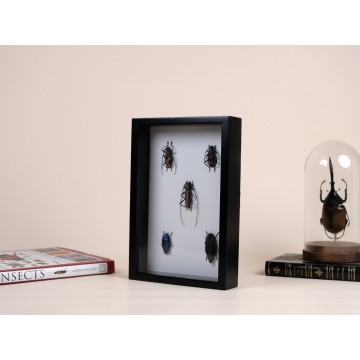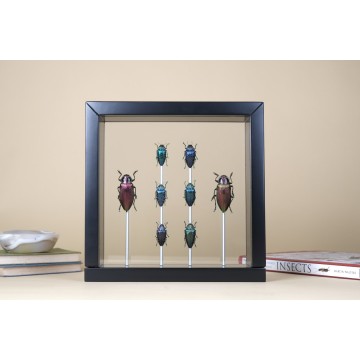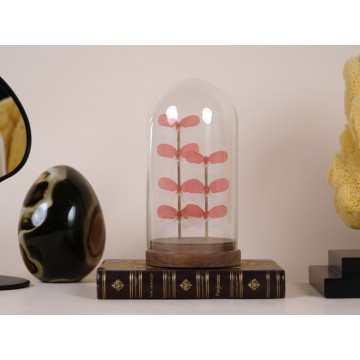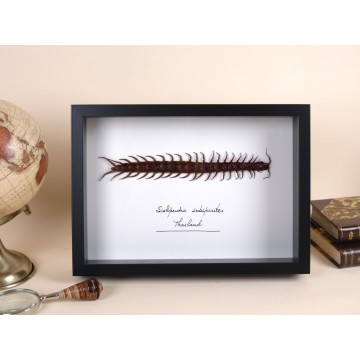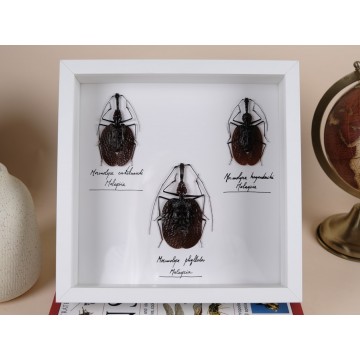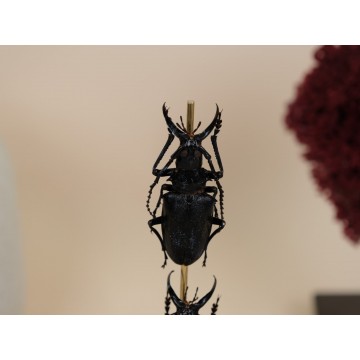Goliathus orientalis dome
Goliathus orientalis, flawlessly preserved within a glass dome. This majestic beetle showcases perfection in every detail. Adorned in a predominantly white hue, the Goliathus features a captivating and intricate pattern, boasting a complex array of white spots enveloped by a striking black border.
These magnificent creatures exclusively inhabit sandy landscapes adorned with thick trees, creating a unique harmony with their surroundings. Our curated specimens originate from a breeding program in the biodiverse Democratic Republic of the Congo, where careful attention to their natural habitat ensures the authenticity and integrity of these remarkable specimens.

